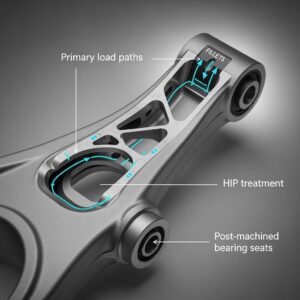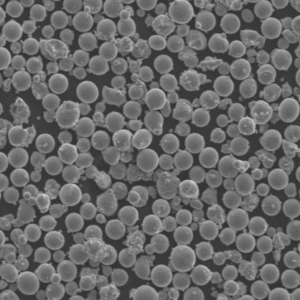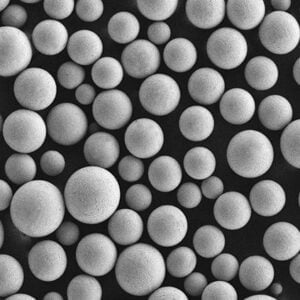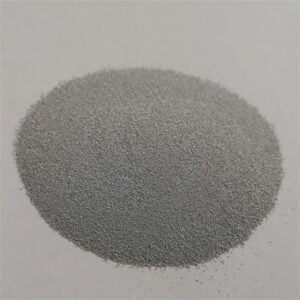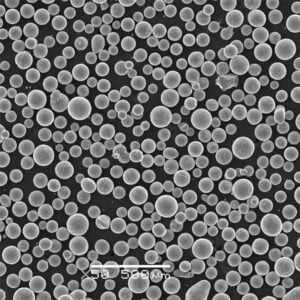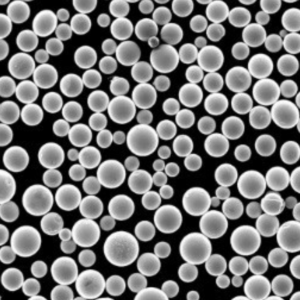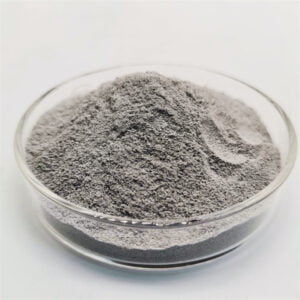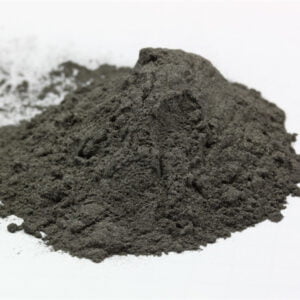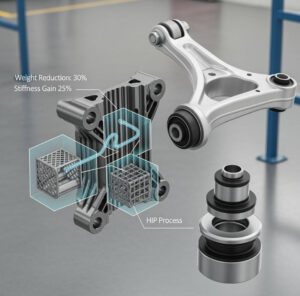티타늄 합금 분말: 구성, 제조 및 응용 분야
목차
티타늄 합금 분말 은 티타늄을 주원소로 알루미늄, 바나듐, 철과 같은 다른 금속과 결합한 합금입니다. 이 합금 성분은 항공우주, 의료 기기 등에 사용할 수 있도록 향상된 특성을 부여합니다.
티타늄 합금 분말의 종류
분말 형태의 일반적인 티타늄 합금 제형:
| 합금 | Ti 콘텐츠 | 기타 요소 | 주요 속성 |
|---|---|---|---|
| Ti-6Al-4V | 90% | 6% Al, 4% V | 고강도, 저밀도 |
| Ti-6Al-7Nb | 90% | 6% Al, 7% Nb | 생체 적합성, 내식성 |
| Ti-10V-2Fe-3Al | 82% | 10% V, 2% Fe, 3% Al | 내열성, 경화 |
| Ti-3Al-2.5V | 93% | 3% Al, 2.5% V | 높은 온도 강도 |
- 알루미늄, 바나듐, 철, 니오븀과 합금된 티타늄은 경도, 강도, 밀도의 균형을 유지합니다.
- 특정 요소는 대상 애플리케이션에 맞게 기계적, 물리적, 생물학적 특성을 조정합니다.
- 혼합물은 고온 거동, 마모 성능, 용접성 등을 최적화합니다.
- 알루미늄은 티타늄 결정 구조를 안정화하여 가공성을 높이고, 바나듐은 강도를 높입니다.
따라서 티타늄 합금에 금속을 맞춤 조합하여 용도에 맞는 기능적 특성을 구현할 수 있습니다.
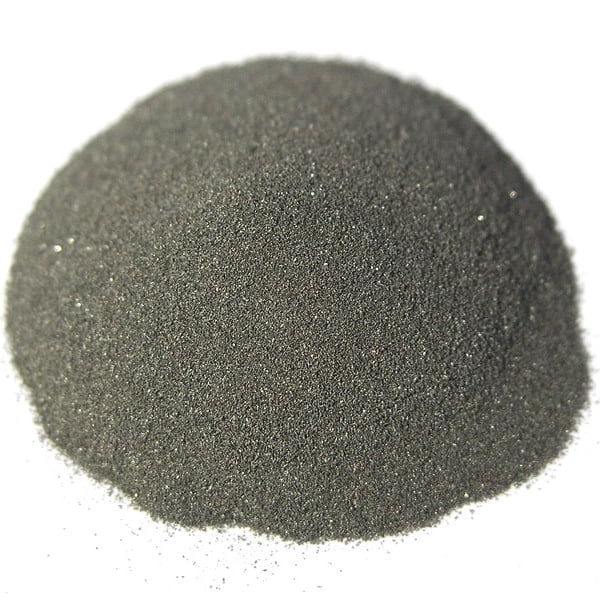
티타늄 합금 분말 생산
티타늄 합금 분말을 생산하는 일반적인 기술:
| 방법 | 프로세스 | 설명 | 파티클 프로퍼티 |
|---|---|---|---|
| 가스 분무 | 용융 흐름이 가스 제트에 충돌하는 경우 | 빠른 냉각으로 구형 입자 형성 | 뛰어난 유동성 |
| 플라즈마 분무 | 고온 플라즈마가 합금을 녹입니다. | 매우 미세한 구형 분말 생산 | 서브 마이크론 크기 |
| 수화물-수소화물 | 수 소화물 상 분쇄 | 수화물의 불규칙한 부서지기 쉬운 입자 | 적당한 흐름 |
| 기계적 합금 | 분말 입자 변형 용접 | 입자 크기가 미세한 복합 구조 | 흐름 불량 |
- 가스 및 플라즈마 분무로 적층 제조에 적합한 미세한 구형 합금 분말 생성
- 수 소화물-탈수 소화물 방법은 부서지기 쉬운 수 소화물 상을 작은 입자로 분쇄합니다.
- 기계적 합금은 변형을 통해 작은 입자를 복합 집합체로 용접합니다.
따라서 다양한 기술을 통해 티타늄 합금 입자 크기, 모양 및 내부 미세 구조를 맞춤화할 수 있습니다.
응용 티타늄 합금 분말
티타늄 합금 분말은 다양한 분야의 고성능 부품을 가능하게 합니다:
| 섹터 | 애플리케이션 | 활용되는 속성 |
|---|---|---|
| 항공우주 | 터빈 블레이드, 기체 부품 | 높은 비강도 |
| 산업 | 식품 가공 장비 | 내식성 |
| 자동차 | 커넥팅 로드, 밸브 | 내열성 |
| 바이오메디컬 | 임플란트, 보철물 | 생체 적합성 |
| 방어 | 방어구 재료 | 탄도 보호 |
| 적층 제조 | 3D 프린팅 부품 | 인쇄 가능성 |
- 티타늄 부품을 사용한 항공기 및 차량의 연료를 절약할 수 있는 가벼운 강도
- 생체 중성 티타늄 합금 임플란트는 인체 거부반응을 방지합니다.
- 산업 플랜트의 독한 화학 물질에 적합한 내식성
- 합금 맞춤 제작을 통해 각 용도에 맞는 티타늄 등급을 고객에게 제공합니다.
따라서 맞춤형 티타늄 합금 분말은 다양한 까다로운 산업 분야에서 첨단 제조를 가능하게 합니다.
티타늄 합금 분말 지정
주요 티타늄 합금 분말 품질 지표:
| 매개변수 | 일반적인 값 | 테스트 방법 |
|---|---|---|
| 합금 구성 | 중량별 요소 비율 | ICP 분광법 |
| 입자 크기 분포 | 범위 및 평균 크기 | 레이저 회절 |
| 겉보기 밀도 | 최대 85%의 실제 밀도 | 스콧 체적계 |
| 탭 밀도 | 최대 95%의 실제 밀도 | 탭하여 측정 |
| 파티클 모양 | 구형성, 부드러움 | SEM 이미징 |
| 분말 유량 | 휴식 각도, 홀 유량계 | 표준 테스트 퍼널/컨테이너 |
- 성분 검사를 통해 티타늄, 알루미늄, 바나듐 등의 비율을 확인합니다.
- 입자 크기 분포로 의도한 제조 공정에 적합성 보장
- 밀도는 포장 효율과 다공성을 나타냅니다.
- 입자 모양은 도포 성능과 파우더 처리에 영향을 미칩니다.
- 유량으로 자동 운송 및 계량에 대한 적합성 검증
따라서 이러한 메트릭은 구매한 티타늄 합금 분말이 애플리케이션 요구 사항을 충족하는지 확인하는 데 도움이 됩니다.
티타늄 합금 분말 유형 비교
일부 티타늄 합금은 어떻게 측정되나요?
| 합금 | Ti-6Al-4V | Ti-6Al-7Nb | Ti-10V-2Fe-3Al |
|---|---|---|---|
| 밀도 | 4.43g/cc | 4.52g/cc | 4.38g/cc |
| 인장 강도 | 128 ksi | 126 ksi | 115 ksi |
| 영의 계수 | 16 msi | 10 msi | 15msi |
| 최대 서비스 온도 | 700°F | 750°F | 800°F |
| 생체 적합성 | 보통 | 우수 | Poor |
| 비용 | 낮음 | 높음 | 보통 |
- Ti-6Al-4V는 성능과 비용을 겸비한 대표적인 티타늄 합금입니다.
- 의료용으로 우수한 생체 적합성을 제공하는 Nb 및 Ta 합금
- 바나듐과 철의 함량이 높아 고온에서도 안정적입니다.
- 알루미늄 함유 합금은 무게 대비 강도가 더 높습니다.
따라서 각 티타늄 합금 배합은 대상 용도에 따라 특정 유리한 특성을 가지고 있습니다.
티타늄 합금 분말 공급업체
티타늄 합금 분말의 선도적인 글로벌 생산업체:
| 회사 | 본사 위치 | 사용 가능한 성적 | 생산 능력 |
|---|---|---|---|
| ATI 파우더 메탈 | US | Ti-6Al-4V, 맞춤형 합금 | 5,000톤/년 |
| Tekna | 캐나다 | Ti-6Al-4V 및 기타 | 게시되지 않음 |
| 호가나스 그룹 | 스웨덴 | Ti-6Al-4V | 3,000톤/년 |
| TLS 테크닉 | 독일 | TiAl, TiAlNb, Ti 분말 | 게시되지 않음 |
| CNPC 파우더 | 중국 | Ti-6Al-4V, TiAl | 10,000메트릭톤/년 |
- 미국의 ATI 파우더 메탈은 전 세계적으로 티타늄 합금 분말을 생산하는 선도적인 기업입니다.
- 스웨덴의 호가나스 그룹도 상당한 규모의 티타늄 분말 제조를 운영하고 있습니다.
- 중국은 글로벌 수출을 모색하는 여러 대형 티타늄 합금 분말 제조업체를 보유하고 있습니다.
- 소규모 업체들도 성장하는 티타늄 분말 산업에 참여하고 있습니다.
따라서 티타늄 합금에 대한 수요 증가를 충족하기 위해 공급 능력을 계속 확장하고 있습니다.
티타늄 합금 분말 가격 책정
야구장 티타늄 합금 분말 가격:
| 합금 | kg당 가격 | 입자 크기 범위 |
|---|---|---|
| Ti-6Al-4V | $50 – $150 | 15~120미크론 |
| Ti-6Al-7Nb | $250 – $500 | 5~45미크론 |
| Ti-10V-2Fe-3Al | $75 – $200 | 15~63미크론 |
| Ti-3Al-2.5V | $100 – $150 | 45~150미크론 |
- 가격은 구매량과 입자 크기 분포 특성에 따라 크게 달라집니다.
- 특수 합금과 고급 의료용 등급은 더 높은 가격을 받습니다.
- Ti-6Al-4V는 산업 규모에서 가장 경제적으로 생산됩니다.
- 5~10톤 이상의 계약에는 할인 요금이 적용됩니다.
따라서 티타늄 합금 분말은 상대적으로 고가이기 때문에 주로 항공우주 및 방위 분야로 응용 분야가 제한되어 있습니다.
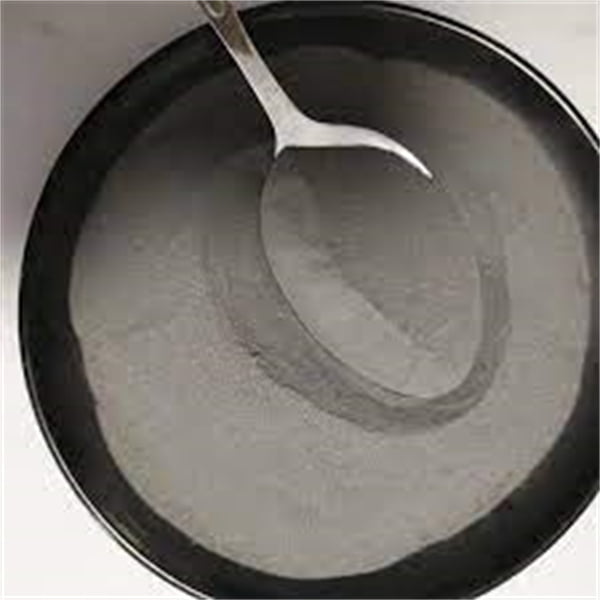
티타늄 합금 분말 FAQ
| 질문 | 답변 |
|---|---|
| 티타늄 합금은 어떤 색상을 가질 수 있나요? | 자연스러운 회색이 가장 일반적입니다. 컬러링 표면 처리도 적용됩니다. |
| 파우더는 특별한 취급이 필요한가요? | 취급 중 산화를 방지하기 위해 불활성 가스 블랭킷을 사용하는 것이 좋습니다. |
| 이 파우더로 콜드 스프레이가 가능한가요? | 예, 입자 변형으로 고밀착 코팅이 가능합니다. |
| 티타늄 합금은 자성을 띠지 않나요? | 예, 모든 등급은 자기 투과성이 매우 낮습니다. |
| 이러한 분말을 항공으로 안전하게 배송할 수 있나요? | 예, 매우 미세한 반응성 분말을 제외하고는 운송에 제한이 없습니다. |
따라서 티타늄 합금 분말은 대부분의 금속 분말 취급, 가공 및 코팅 작업에 적합합니다.
결론
요약하면, 티타늄 합금 분말은 밀도, 강도, 모듈러스 및 생체 적합성의 균형을 맞출 수 있는 설계 유연성을 제공하여 산업 전반의 고급 엔지니어링 요구 사항을 충족합니다. 제조 기술은 맞춤형 입자 특성을 부여합니다. 합금 배합을 통해 맞춤형 특성 튜닝이 가능합니다. 티타늄 합금 분말은 $50/kg 이상의 비교적 높은 가격에도 불구하고 부품 성능이 비용 고려 사항보다 우선시되는 방위, 의료, 항공우주 및 자동차 응용 분야에서 더 뛰어난 성능을 제공합니다.
Additional FAQs about Titanium Alloy Powders (5)
1) What powder characteristics most influence additive manufacturing quality?
- Particle size distribution (e.g., 15–45 µm for PBF), high sphericity (>0.9), low satellites, narrow D10–D90 spread, low interstitials (O, N, H), and good flow (Hall flow ≤25 s/50 g). These drive layer packing, laser absorption, density, and fatigue.
2) How many reuse cycles are acceptable for Ti-6Al-4V powder in PBF?
- Typically 5–15 cycles with sieving and 20–50% virgin top-up per cycle. Monitor O/N/H, PSD, and flowability per ISO/ASTM 52907; requalify if oxygen trends toward spec limits (e.g., ≤0.20 wt% O for many AM grades) or density/fatigue drifts.
3) Which production method is best for medical-grade titanium alloy powders?
- Plasma atomization and electrode/plasma rotating electrode (PREP) produce highly spherical, low-oxide powders favored for implants. They support tight PSDs and lower inclusion content compared to HDH for PBF applications.
4) What post-processing is typical for AM Ti-6Al-4V parts?
- Stress relief (e.g., 650–800°C), hot isostatic pressing (HIP 900–930°C/100–150 MPa/2–4 h), and heat treatment per ASTM F3001/AMS 4999 equivalents. HIP improves fatigue by closing internal porosity.
5) How do oxygen and nitrogen affect properties of Titanium Alloy Powders and parts?
- Interstitials increase strength/hardness but reduce ductility and fatigue life. Maintain low O/N in powder and control pickup during reuse and processing; use inert handling and dry environments.
2025 Industry Trends for Titanium Alloy Powders
- Tighter interstitial control: Aerospace/medical buyers specify lower O (≤0.12–0.18 wt%) and N (≤0.03 wt%) for fatigue- and implant-critical builds.
- Powder genealogy and EPDs: Digital material traceability from melt to build, plus Environmental Product Declarations covering recycle rates and energy per kg.
- AM allowables expansion: More published design allowables for Ti‑6Al‑4V (ELI) and Ti‑6Al‑7Nb across laser PBF and EBM, aligned to ASTM F42 frameworks.
- Binder Jetting and MIM convergence: Fine Ti and Ti alloy powders with tailored binders enable BJ/MIM routes for cost-sensitive components, with HIP to achieve fatigue targets.
- Capacity additions stabilize price: New atomization/PREP lines in NA/EU/Asia shorten lead times for aerospace PSDs (15–45 µm) and medical grades (10–38 µm).
2025 snapshot: Titanium Alloy Powders metrics
| 메트릭 | 2023 | 2024 | 2025 YTD | Notes/Sources |
|---|---|---|---|---|
| Typical PSD for PBF (µm, Ti-6Al-4V) | 15–53 | 15–45 | 15–45 | OEM datasets, supplier catalogs |
| Oxygen spec (wt%, AM grade) | ≤0.20 | ≤0.15–0.18 | ≤0.12–0.18 | ISO/ASTM 52907, buyer specs |
| As-built density (laser PBF, %) | 99.3–99.7 | 99.4–99.8 | 99.5–99.85 | Parameter/machine dependent |
| UTS after HIP (MPa, Ti-6Al-4V ELI) | 920–980 | 930–1000 | 940–1020 | ASTM F3001 ranges; vendor data |
| Powder price (USD/kg, Ti-6Al-4V AM grade) | 80–180 | 85–190 | 85–185 | PSD, sphericity, volume affect |
| Avg reuse cycles (with SPC) | 6–10 | 8-12 | 10-15 | With sieving and top-up |
References:
- ISO/ASTM 52907 (metal powder), 52900/52930 (AM fundamentals/qualification): https://www.iso.org
- ASTM F42 standards (F3001 for Ti‑6Al‑4V ELI, F2924 for Ti‑6Al‑4V): https://www.astm.org
- NIST AM resources and data programs: https://www.nist.gov
Latest Research Cases
Case Study 1: Low-Oxygen Ti‑6Al‑4V Powder Improves Fatigue of L-PBF Flight Brackets (2025)
Background: An aerospace Tier‑1 targeted longer HCF life on L‑PBF brackets without changing geometry.
Solution: Switched to low‑O AM powder (≤0.13 wt%), implemented closed-loop sieving/top-up tracking, HIP at 920°C/100 MPa/3 h, and surface finishing to Ra ≤1.5 µm.
Results: As-built density 99.8%; UTS 970–1005 MPa post‑HIP; HCF life +22% at R=0.1; powder oxygen remained ≤0.15 wt% after 12 reuse cycles; scrap reduced 8%.
Case Study 2: EBM Ti‑6Al‑7Nb Cups and Stems for Orthopedics with Validated Porous Lattices (2024)
Background: An implant OEM needed osseointegration and reproducible mechanicals for acetabular cups.
Solution: EBM-printed Ti‑6Al‑7Nb with controlled lattice porosity (55–65%), validated per ASTM F3001/F2924 analogs and ISO 10993 biocompatibility; final HIP to stabilize fatigue.
Results: Shear strength of porous interface +18% vs prior design; fatigue endurance at 10 million cycles met internal spec; CT-based porosity within ±3% of target; zero adverse biocompatibility outcomes.
전문가 의견
- Prof. Hamish L. Fraser, The Ohio State University
Key viewpoint: “Powder cleanliness and interstitial control dominate fatigue performance in AM titanium alloys—HIP helps porosity but not nonmetallic inclusions.” - Dr. Laura Ely, SVP Technology, 3D Systems
Key viewpoint: “Disciplined powder lifecycle management—oxygen trending, PSD control, and batch genealogy—underpins consistent properties for Titanium Alloy Powders in serial production.” - Prof. Peter D. Lee, University College London
Key viewpoint: “Process–structure modeling coupled with in-situ monitoring is making near-net prediction of defects and microstructure feasible for titanium AM routes.”
Citations: University/OEM publications and conference talks: https://mse.osu.edu, https://www.3dsystems.com, https://www.ucl.ac.uk
Practical Tools and Resources
- Standards and specifications:
- ASTM F3001 (Ti‑6Al‑4V ELI AM), ASTM F2924 (Ti‑6Al‑4V), ISO/ASTM 52907 (powder): https://www.astm.org, https://www.iso.org
- Property data and handbooks:
- ASM Handbooks Online (Ti alloys), MMPDS for aerospace allowables: https://www.asminternational.org, https://mmpds.org
- AM process control:
- ASTM F3301 (PBF process control), ISO/ASTM 52930 (qualification): standards portals above
- Powder and materials suppliers:
- Carpenter Additive, Sandvik Osprey, AP&C, Tekna—datasheets with PSD/interstitials
- Modeling and QA:
- Ansys Additive/Netfabb Simulation for distortion/HIP; CT NDE practice (ASTM E1441)
Notes on reliability and sourcing: Specify melt route (e.g., VAR for medical/aero), interstitial limits, PSD, and morphology. Implement SPC on O/N/H and flow, define reuse policies, and maintain lot/build traceability. For critical hardware, include HIP, CT acceptance criteria, and statistically planned coupon testing aligned to end-use standards.
Last updated: 2025-10-15
Changelog: Added 5 targeted FAQs, 2025 trend table with metrics/sources, two recent case studies, expert viewpoints with citations, and a practical tools/resources section specific to Titanium Alloy Powders
Next review date & triggers: 2026-02-15 or earlier if ISO/ASTM standards update, major suppliers change interstitial specs/prices, or new allowables for Ti-6Al-4V/Ti-6Al-7Nb AM are published
공유
중국 칭다오에 본사를 둔 선도적인 적층 제조 솔루션 제공업체인 MET3DP Technology Co. 당사는 산업용 3D 프린팅 장비와 고성능 금속 분말을 전문으로 합니다.
관련 기사
